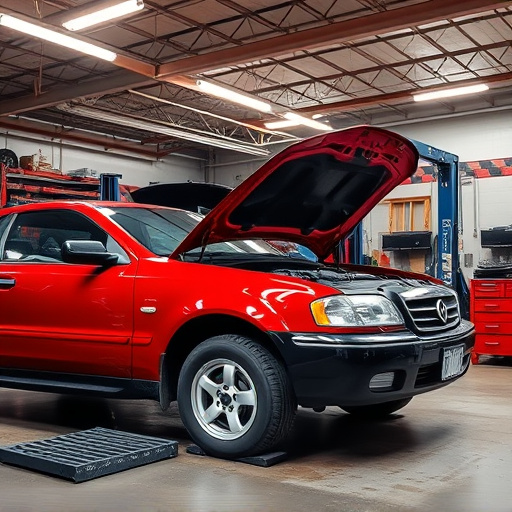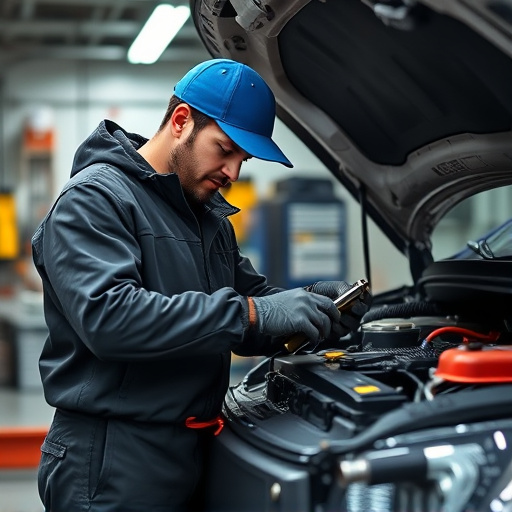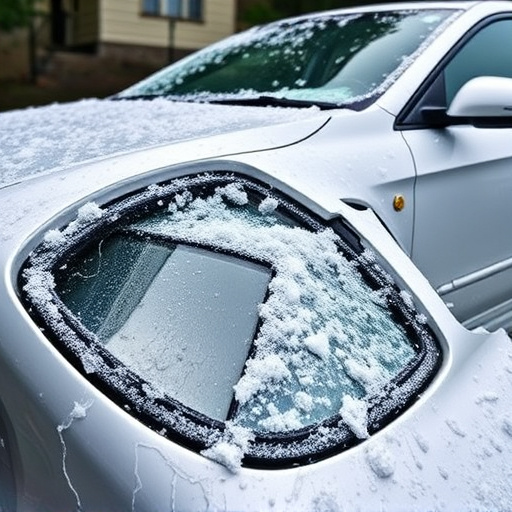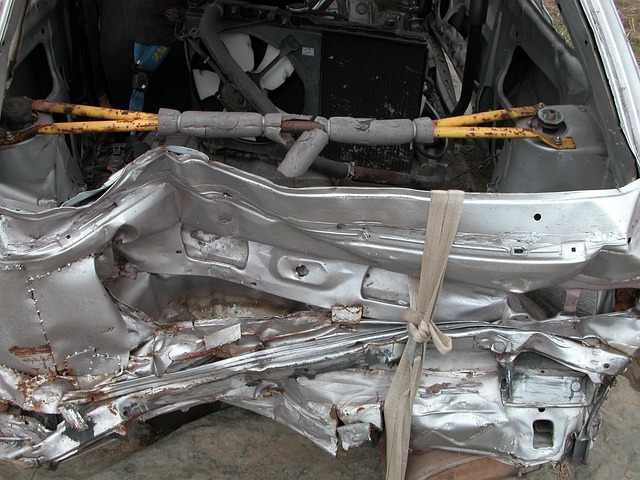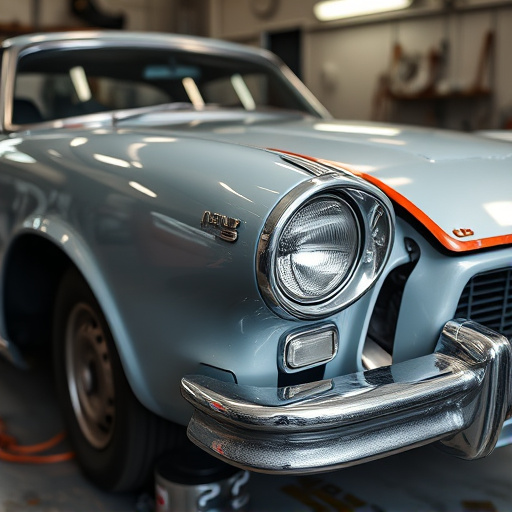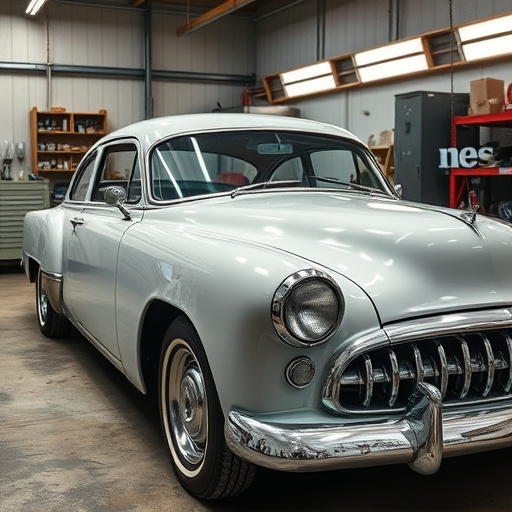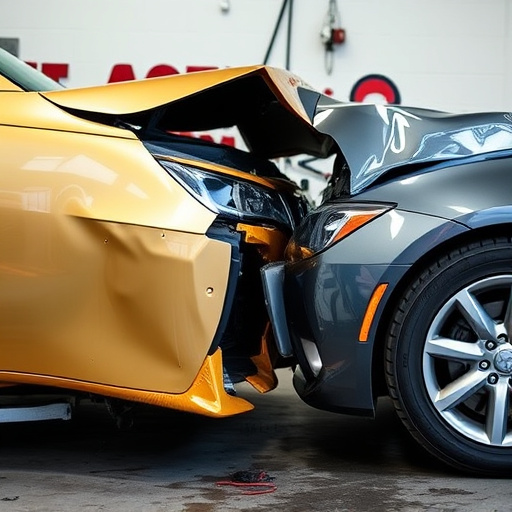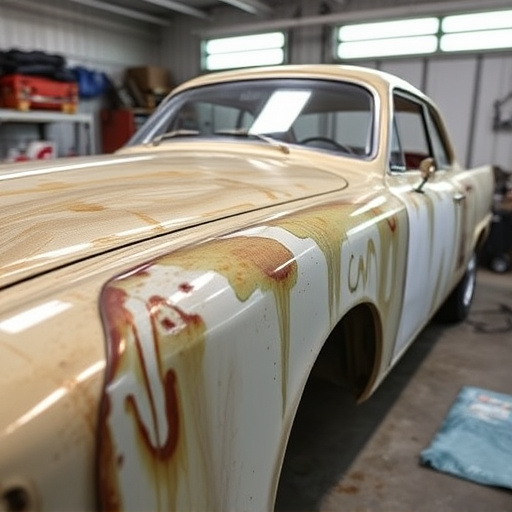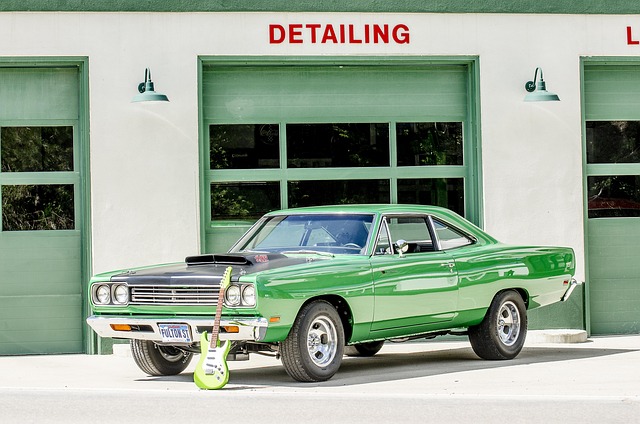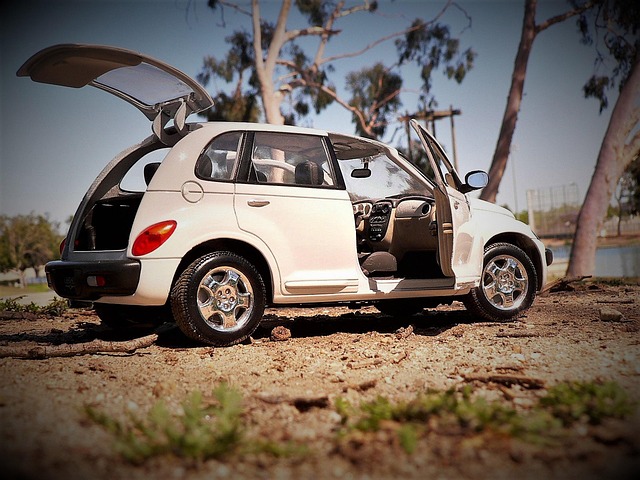Vehicle crash repair involves meticulous inspection, detailed documentation, and a phased process from part replacement to refinishing, using advanced equipment and high-quality materials. Repair times vary significantly based on damage severity, availability of parts, shop capacity, and skill level required for specific tasks like dent removal in luxury vehicles; estimates are provided per component to accurately assess overall repair duration.
Curious about how long your car’s fix will take after an accident? Understanding the vehicle crash repair process is key. This comprehensive guide breaks down the typical phases of repair, from initial assessment to final re-inspection. We’ll explore average repair times for specific components, helping you anticipate turnaround. Additionally, we’ll highlight factors influencing overall duration, ensuring you’re informed about every step in the crucial process of getting your vehicle back on the road safely.
- Understanding Crash Repair Phases
- Estimating Repair Time per Component
- Factors Affecting Total Repair Duration
Understanding Crash Repair Phases

Crash repair is a meticulous process that involves several distinct phases. Initially, the vehicle undergoes a thorough inspection to assess the extent of damage. This includes evaluating structural integrity, identifying damaged components like bumpers, fenders, and doors, as well as examining the condition of the car’s paintwork. Depending on the severity, advanced diagnostic tools might be employed to pinpoint issues with safety systems and other electronic components.
Once the damage is meticulously documented, skilled technicians begin the repair process. This often includes replacing damaged parts with new or refurbished ones, performing intricate welding or bonding operations for structural restoration, and meticulously refinishing the vehicle’s exterior. For certain types of dents or scratches, innovative techniques like paintless dent repair can be employed, which preserves the original factory finish by carefully manipulating the metal without sanding or repainting. Car bodywork services often utilize advanced equipment and high-quality materials to ensure the restored vehicle meets safety standards and looks as good as new.
Estimating Repair Time per Component

Estimating repair time for a vehicle crash involves assessing each damaged component separately. An automotive body shop will meticulously evaluate the extent of damage to parts like the chassis, frame, doors, fenders, and bumper. Each component has its own repair process, from simple panel beating and painting for less severe dents to more complex structural repairs for major crumple zones or frame straightening.
The complexity of individual repairs, along with the need for specialized tools and techniques in body shop services, directly impacts the overall vehicle crash repair timeline. Smaller, less critical fixes can often be completed within a few days, while more significant structural repairs could take several weeks to ensure proper alignment, fitment, and safety standards are met. Car bodywork, when treated as individual parts rather than a monolithic whole, allows for a more accurate prediction of the time required to return your vehicle to its pre-accident condition.
Factors Affecting Total Repair Duration

The duration of a vehicle crash repair can vary significantly based on several factors. First, the severity of the damage plays a crucial role; while minor dents or scratches might be fixed within a few hours, more extensive structural repairs could take weeks. Additionally, the availability and complexity of replacement parts are essential considerations; rare or specialized components may lead to longer wait times.
Another factor is the reputation and capacity of the repair shop. Established facilities with experienced technicians tend to handle repairs more efficiently than newer or understaffed ones. Moreover, unforeseen challenges during the repair process, such as unexpected mechanical issues or delays in parts delivery, can impact the total duration. In the case of luxury vehicles like Mercedes Benz, specialized skills and rare parts might further extend the repair time, with car dent removal being a common yet meticulous step in such repairs.
Vehicle crash repair times vary based on several factors, from the severity of the incident to the complexity of individual components. Understanding these variables is crucial for setting realistic expectations during the repair process. By estimating repair time per component and considering broader influences, technicians can provide accurate timelines, ensuring customers are well-informed about their vehicle’s journey back to optimal condition. This transparent approach enhances customer satisfaction and fosters trust in the overall vehicle crash repair process.

